
The Heartbeat of the Plains: Oklahoma City Metropolitan Area
Discover the vibrant Oklahoma City Metropolitan Area: a blend of rich history, family-friendly attractions, outdoor adventures, and culinary delights in the heart of Oklahoma.
Oklahoma City, the capital of Oklahoma, is a vibrant and bustling metropolitan area that combines the charm of the Midwest with the energy of a modern city. Visitors can explore the rich history of the American West at the National Cowboy & Western Heritage Museum, which showcases art, artifacts, and exhibits that bring the cowboy era to life. The city's deep connection to history is also evident in its many cultural districts, such as Bricktown, a former warehouse district now filled with restaurants, shops, and entertainment venues. Family-friendly attractions abound in Oklahoma City. The Oklahoma City Zoo and Botanical Garden offers a delightful day out with over 500 animal species and beautifully maintained gardens. For those interested in science and technology, the Science Museum Oklahoma provides interactive exhibits and planetarium shows that captivate both young and old. Additionally, the Myriad Botanical Gardens, with its Crystal Bridge Tropical Conservatory, offers a serene escape right in the heart of the city. Outdoor enthusiasts will find plenty to do in Oklahoma City as well. The Oklahoma River provides opportunities for kayaking, rowing, and paddleboarding, while the city's extensive park system offers trails for hiking and biking. Lake Hefner is ideal for sailing, fishing, and picnicking. Sports fans can catch a thrilling NBA game with the Oklahoma City Thunder or enjoy a minor league baseball game with the Oklahoma City Dodgers at the Chickasaw Bricktown Ballpark. Culinary adventurers will not be disappointed either. The city's food scene is a delightful mix of traditional Southern cuisine and innovative culinary creations. From mouthwatering barbecue to upscale dining, Oklahoma City's restaurants cater to all tastes and preferences. The annual Oklahoma State Fair is also a must-visit, featuring unique local foods, thrilling rides, and live entertainment. In summary, the Oklahoma City Metropolitan Area is a destination that offers a rich blend of history, culture, outdoor activities, and culinary delights. Its warm hospitality and diverse attractions make it a perfect spot for tourists of all ages.
Local tips in Oklahoma City Metropolitan Area
- Visit the Bricktown district in the evening for a lively atmosphere with dining and entertainment options.
- Check the schedule for the Oklahoma State Fair if visiting in September to experience local culture and cuisine.
- Rent a bike and explore the extensive trails around Lake Hefner for stunning views and a dose of fresh air.
- Book tickets in advance for popular attractions like the National Cowboy & Western Heritage Museum and the Science Museum Oklahoma.
- Try local specialties like chicken-fried steak and fried okra at traditional Southern restaurants.
When is the best time to go to Oklahoma City Metropolitan Area?
Unmissable attractions to see
Oklahoma City Zoo
Explore the Oklahoma City Zoo, an enchanting destination that combines wildlife, conservation, and the beauty of botanical gardens for an unforgettable experience.
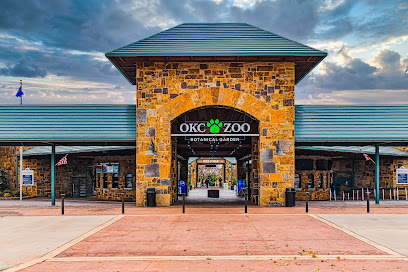
Oklahoma City National Memorial & Museum
Explore the Oklahoma City National Memorial & Museum, a powerful tribute to resilience and healing, where history and remembrance converge.
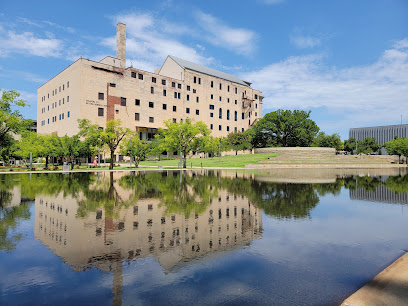
Myriad Botanical Gardens
Discover the beauty of nature at Myriad Botanical Gardens, an urban oasis in Oklahoma City with diverse plant collections and serene landscapes.

Frontier City
Discover exhilarating rides, captivating shows, and family-friendly fun at Frontier City, Oklahoma City's premier amusement park.

National Cowboy & Western Heritage Museum
Discover the vibrant history and art of the American West at the National Cowboy & Western Heritage Museum in Oklahoma City.

Will Rogers Gardens
Experience the beauty of nature at Will Rogers Gardens, an urban oasis in Oklahoma City featuring stunning landscapes and tranquil gardens.
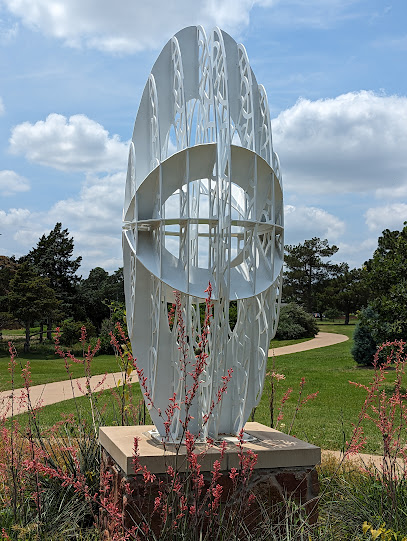
Museum of Osteology
Discover the incredible diversity of life through bones at the Museum of Osteology, Oklahoma City’s unique skeletal museum, perfect for all ages.

Martin Park Nature Center
Experience the tranquility of Martin Park Nature Center, a nature preserve in Oklahoma City filled with beautiful trails and diverse wildlife.

Science Museum Oklahoma
Discover the wonders of science and space at Science Museum Oklahoma, where interactive exhibits and a stunning planetarium await your exploration.

Hurricane Harbor Oklahoma City
Experience the ultimate water adventure at Hurricane Harbor Oklahoma City, where fun meets relaxation in a thrilling water park setting.
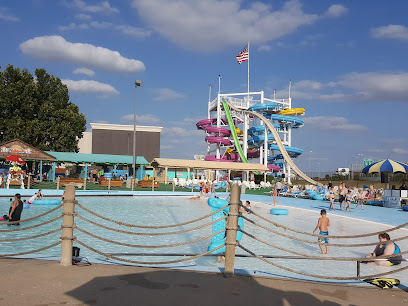
Oklahoma City Museum of Art
Explore the Oklahoma City Museum of Art, featuring diverse collections and stunning Dale Chihuly glass sculptures in a vibrant cultural setting.

Bricktown Water Taxi
Explore Oklahoma City's scenic Bricktown district aboard the charming Bricktown Water Taxi for a unique and memorable experience.

Wheeler Ferris Wheel at Wheeler District
Experience breathtaking views of Oklahoma City from the iconic Wheeler Ferris Wheel, a delightful attraction in the vibrant Wheeler District.

45th Infantry Division Museum
Explore the 45th Infantry Division Museum in Oklahoma City for an enlightening journey through military history and the legacy of American soldiers.
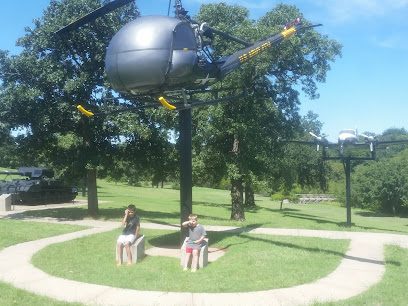
First Americans Museum
Explore the vibrant history and culture of Native American tribes at the First Americans Museum in Oklahoma City, a must-visit for cultural enthusiasts.

Essential places to dine
The Jones Assembly
Discover live music, delicious American cuisine, and a vibrant atmosphere at The Jones Assembly in Downtown Oklahoma City.
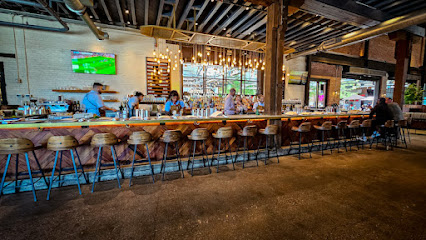
The Melting Pot
Experience the art of fondue at The Melting Pot in Bricktown - where fine dining meets interactive culinary adventures.

The Mule
Experience the best of American cuisine at The Mule in Oklahoma City - gourmet sandwiches and a lively atmosphere await!

Vast
Experience exquisite New American cuisine and stunning views at Vast, Oklahoma City's premier fine dining destination on the 49th floor.

Kitchen No. 324
Discover the culinary delights of Kitchen No. 324 in Oklahoma City - your go-to spot for organic breakfast and brunch!

Cheever's Cafe
Discover the flavors of America at Cheever's Cafe in Oklahoma City—where brunch dreams come true amidst a cozy ambiance.

Texas de Brazil - Oklahoma City
Discover authentic Brazilian steakhouse cuisine at Texas de Brazil - Oklahoma City; where every meal is a celebration of flavor and tradition.

The Press
Experience delectable American breakfast delights at The Press in Oklahoma City – where every meal is crafted with care and creativity.

La Brasa
Discover La Brasa: Where South American Flavors Meet Asian Fusion in Oklahoma City's Vibrant Dining Scene.
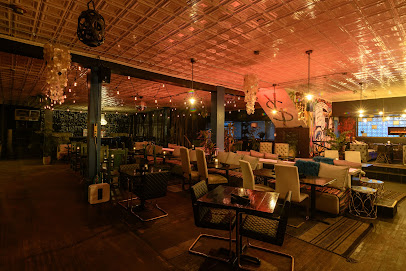
Charleston's Restaurant
Experience the best of American cuisine at Charleston's Restaurant in Bricktown – where flavor meets hospitality!
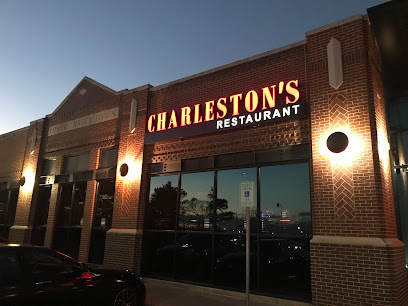
Parlor OKC
Discover Parlor OKC: A culinary hotspot featuring diverse dishes and a lively bar scene in the heart of Oklahoma City.
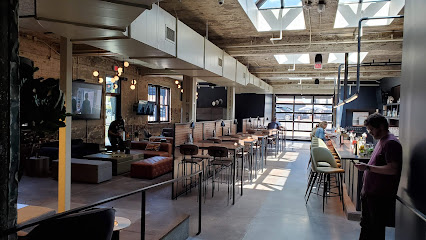
FLINT Kitchen & Bar
Experience culinary excellence at FLINT Kitchen & Bar in Oklahoma City - where American flavors meet vibrant bar culture.

FRIDA southwest
Experience vibrant Southwestern American cuisine at Frida Southwest in Oklahoma City—where tradition meets innovation in every dish.

Ramsay's Kitchen
Discover Ramsay's Kitchen in Oklahoma City: A premier destination for American cuisine crafted by Gordon Ramsay with exceptional flavors and ambiance.

Tellers
Discover Tellers: A vibrant American-Italian restaurant in Oklahoma City's Business District offering unforgettable flavors and ambiance.

Markets, malls and hidden boutiques
Craig's Curious Emporium
Explore Craig's Curious Emporium: A treasure trove of unique gifts, books, and metaphysical supplies in the heart of Oklahoma City.

Plenty Mercantile - Gift Shop & Venue
Explore Plenty Mercantile, Oklahoma City's charming gift shop and venue offering unique local goods and vibrant community events.
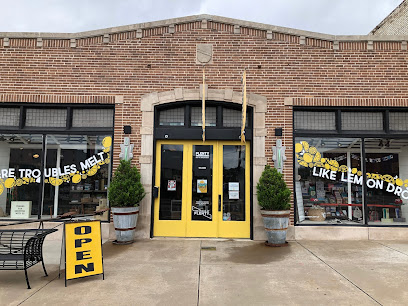
Antique Store: Decades Revisited, a Vintage Mall
Discover timeless treasures at Decades Revisited, Oklahoma City's premier destination for antique lovers and vintage enthusiasts.
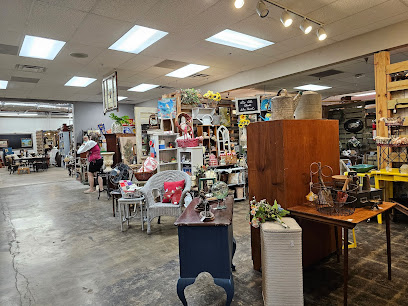
23rd Street Antique Mall
Uncover unique antiques and collectibles in Oklahoma City’s 23rd Street Antique Mall, a must-visit for vintage lovers and treasure hunters.
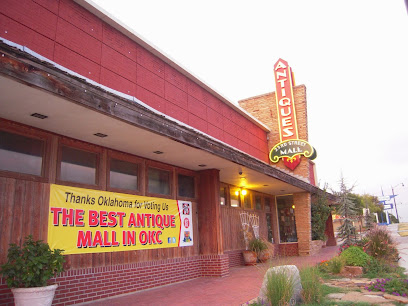
Feathered Nest Market
Explore Feathered Nest Market: A charming gift shop in Warr Acres, Oklahoma, filled with antiques, collectibles, and vintage treasures.

Blue Seven
Explore Blue Seven, Oklahoma City's premier destination for unique gifts and fashionable apparel with a local twist.

OKCMOA Museum Store
Explore the OKCMOA Museum Store for unique art-inspired gifts and local treasures in the heart of Oklahoma City’s Arts District.

Antique Store: ROOM 3 Vintage, a Vintage Mall
Explore the eclectic charm of ROOM 3 Vintage, Oklahoma City's premier antique mall, featuring unique furniture, vintage collectibles, and more.

Shop Good
Discover unique gifts and local artisanal products at Shop Good in Oklahoma City's Automobile Alley – a delightful shopping experience awaits!

Antique Avenue Market
Explore Antique Avenue Market in Oklahoma City for a treasure trove of unique antiques and collectibles. A must-visit for vintage lovers!

Out on a Limb Boutique
Explore Out on a Limb Boutique for unique gifts, stylish fashion, and charming home goods in the heart of Oklahoma City.

Painted Door
Discover unique gifts and local treasures at Painted Door, a charming gift shop in Bricktown, Oklahoma City, perfect for memorable souvenirs.

Scout & Molly's Classen Curve
Explore Scout & Molly's Classen Curve: A boutique haven for stylish women's clothing and unique accessories in Oklahoma City.
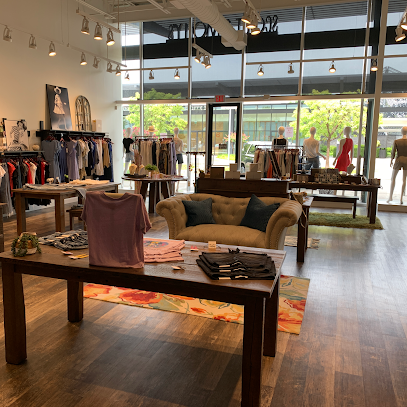
Folk.Life
Explore Folk.Life in Oklahoma City for unique handmade gifts and local art that celebrate the spirit of the region.
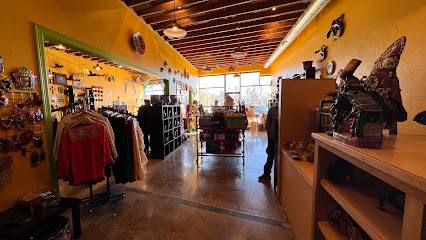
MCG Gifts - My Chic Geek
Explore MCG Gifts - My Chic Geek in Oklahoma City for the best unique gifts, fashionable accessories, and enchanting candles in a delightful shopping atmosphere.

Essential bars & hidden hideouts
Edna's
Discover the lively nightlife at Edna's, Oklahoma City's premier bar and nightclub offering delicious drinks and an unforgettable atmosphere.
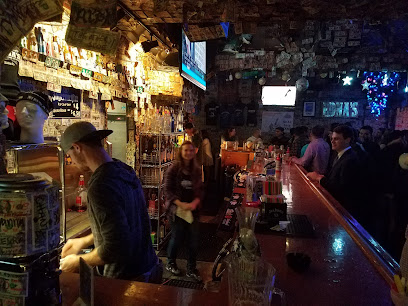
Social Capital
Discover Social Capital: A vibrant beer garden and family restaurant in Oklahoma City, perfect for craft beer lovers and families alike.

JJ's Alley
Discover the lively spirit of Bricktown at JJ's Alley, where great drinks, delicious food, and vibrant entertainment come together for an unforgettable night out.

The R&J Lounge and Supper Club
Discover the perfect blend of fine dining and nightlife at The R&J Lounge and Supper Club in Downtown Oklahoma City.

Coyote Ugly Saloon
Dive into the lively atmosphere of Coyote Ugly Saloon in Bricktown, where every night is a celebration of fun, dancing, and unforgettable moments.

51st Street Speakeasy
Experience the vibrant nightlife at 51st Street Speakeasy, a unique bar in Oklahoma City offering craft cocktails and a cozy atmosphere.
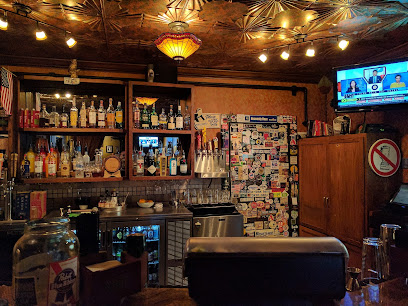
The Pump Bar
Discover the vibrant atmosphere of The Pump Bar in Oklahoma City, where delicious grilled fare meets refreshing drinks in a lively setting.
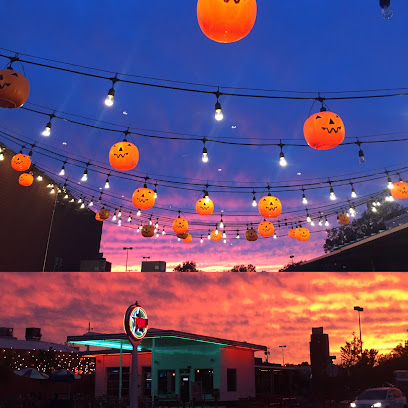
Skinny Slim's
Experience the lively charm of Skinny Slim's Pub in Bricktown, Oklahoma City – your go-to spot for craft beers, cocktails, and sports!

Kat's Tavern
Discover the vibrant social scene at Kat's Tavern, Oklahoma City's beloved bar, known for its friendly atmosphere and delicious drinks.

O Bar
Experience the elegance of O Bar in Oklahoma City, where exquisite cocktails and stunning skyline views create the perfect nightlife escape.
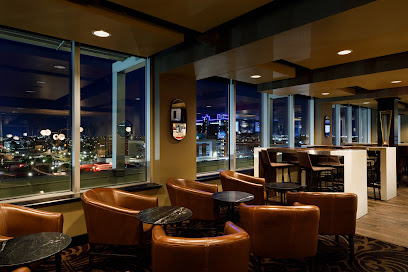
Bunker Club
Discover the vibrant atmosphere and creative cocktails at Bunker Club, Oklahoma City's unique bar destination in the heart of Uptown.

OKC Tap House
Experience Oklahoma City’s lively dining scene at OKC Tap House, where great food, sports, and live music come together for an unforgettable evening.

The Flea
Experience the vibrant nightlife at The Flea, a popular bar in Downtown Oklahoma City known for its eclectic drinks and lively atmosphere.

Sidecar Barley & Wine Bar
Discover the lively Sidecar Barley & Wine Bar in Oklahoma City, where handcrafted cocktails and local craft beers create an unforgettable experience.

Good Times
Experience the vibrant nightlife at Good Times, a bar in Downtown Oklahoma City known for exceptional drinks and lively atmosphere.

Local Phrases about Oklahoma City Metropolitan Area
-
- HelloHowdy
[hahw-dee] - GoodbyeSee ya
[see yuh] - YesYup
[yuhp] - NoNah
[nuh] - Please/You're welcomePlease/No problem
[pleez/noh problum] - Thank youThanks
[thaynks] - Excuse me/SorryPardon me/My bad
[pahr-dun me/my bad] - How are you?Howdy
[hahw-dee] - Fine. And you?Good. You?
[good. yuh?] - Do you speak English?Ya speak English?
[ya speek ing-glish?] - I don't understandI ain't got a clue
[ahy aint got uh kloo]
- HelloHowdy
-
- I'd like to see the menu, pleaseCan I see the menu?
[kan eye see thee men-yoo?] - I don't eat meatI don't eat meat
[ahy dohnt eet meet] - Cheers!Cheers!
[cheers!] - I would like to pay, pleaseCheck, please
[chek, pleez]
- I'd like to see the menu, pleaseCan I see the menu?
-
- Help!Help!
[help!] - Go away!Git!
[git!] - Call the Police!Call the cops!
[kawl thee cops!] - Call a doctor!Get a doc!
[get uh dawk!] - I'm lostI'm lost
[ahym lost] - I'm illI'm sick
[ahym sik]
- Help!Help!
-
- I'd like to buy...I wanna buy...
[ahy wahn-uh buy...] - I'm just lookingJust browsin'
[just brow-zin'] - How much is it?How much?
[how much?] - That's too expensiveThat's steep
[thats steep] - Can you lower the price?Can ya do better?
[kan yuh doh bet-er?]
- I'd like to buy...I wanna buy...
-
- What time is it?What time is it?
[what tahym iz it?] - It's one o'clockIt's one
[its wuhn] - Half past (10)Half ten
[haf ten] - MorningMornin'
[morn-in'] - AfternoonAfternoon
[after-noon] - EveningEvenin'
[even-in'] - YesterdayYesterdee
[yester-dee] - TodayToday
[toh-day] - TomorrowTomorrow
[toh-maw-row] - 1One
[wuhn] - 2Two
[too] - 3Three
[three] - 4Four
[for] - 5Five
[fahyv] - 6Six
[siks] - 7Seven
[sev-uhn] - 8Eight
[eyt] - 9Nine
[nahyn] - 10Ten
[ten]
- What time is it?What time is it?
-
- Where's a/the...?Where's the...?
[wheres thee...?] - What's the address?What's the address?
[whats thee uh-dress?] - Can you show me (on the map)?Show me on the map
[show me on thee map] - When's the next (bus)?When's the next bus?
[whens thee nekst bus?] - A ticket (to ....)A ticket (to ....)
[uh tik-it (tuh ....)]
- Where's a/the...?Where's the...?
History of Oklahoma City Metropolitan Area
-
On April 22, 1889, the Land Run of 1889 brought thousands of settlers to the area that would become Oklahoma City. Within hours, the population of the area skyrocketed, and a tent city emerged. This event marked the founding of Oklahoma City, transforming it from unassigned lands to a bustling hub almost overnight.
-
Oklahoma was granted statehood on November 16, 1907. Oklahoma City was designated as the state capital in 1910, replacing Guthrie. The discovery of oil in the early 20th century spurred rapid economic growth, attracting businesses and residents, and leading to the construction of significant infrastructure.
-
The 1930s brought the Great Depression and the Dust Bowl, severely impacting Oklahoma City and its surroundings. The agricultural collapse and economic downturn led to widespread hardship, but also to significant federal investment through New Deal programs, which helped rebuild the economy.
-
Following World War II, Oklahoma City experienced a period of rapid modernization and suburban expansion. The construction of major highways facilitated growth, and the city saw the rise of new industries and a booming population. This era also saw the establishment of key cultural institutions.
-
The Civil Rights Movement of the 1960s had a profound impact on Oklahoma City. The city was a focal point for desegregation efforts, including notable sit-ins and protests that led to significant social change. These movements laid the groundwork for greater racial equality in the region.
-
On April 19, 1995, the Alfred P. Murrah Federal Building in downtown Oklahoma City was the target of a domestic terrorist attack. The bombing resulted in the deaths of 168 people and injured hundreds more. This tragic event deeply affected the community and led to the creation of the Oklahoma City National Memorial & Museum.
-
In recent decades, Oklahoma City has worked to diversify its economy beyond oil and gas. Investments in health care, aerospace, and technology have contributed to a more resilient economic landscape. The city's revitalization projects have transformed downtown into a vibrant area with cultural attractions and entertainment.
-
Oklahoma City has experienced a cultural renaissance in the 21st century. The development of districts like Bricktown has revitalized the urban core, attracting tourists and locals alike. The city now boasts a rich tapestry of arts, music, and culinary scenes, reflecting its diverse heritage and modern vibrancy.
Oklahoma City Metropolitan Area Essentials
-
Oklahoma City is serviced by Will Rogers World Airport (OKC), which is located about 6 miles southwest of downtown. The airport offers flights from major U.S. cities, making it easily accessible. For those driving, major highways such as I-35, I-40, and I-44 converge in Oklahoma City, providing convenient road access. Amtrak’s Heartland Flyer provides daily service between Oklahoma City and Fort Worth, Texas.
-
Oklahoma City has several transportation options. EMBARK provides public bus services throughout the metropolitan area. Streetcars, known as the Oklahoma City Streetcar, provide convenient travel within downtown and the Bricktown area. For more flexibility, rental cars and ridesharing services like Uber and Lyft are widely available. Biking is also an option with Spokies bike-share stations scattered throughout the city.
-
The currency used in Oklahoma City is the United States Dollar (USD). Credit and debit cards are widely accepted in most establishments, including hotels, restaurants, and shops. ATMs are plentiful, especially in downtown areas and shopping districts. It's a good idea to carry some cash for smaller vendors or in case of emergencies.
-
Oklahoma City is generally safe for tourists, but it is wise to stay vigilant. Areas such as the downtown and Bricktown are well-patrolled and popular with tourists. However, it is advisable to avoid certain neighborhoods such as Northeast Oklahoma City and parts of the Southside after dark, as these areas have higher crime rates. Always keep an eye on your belongings in crowded places and be cautious when traveling alone at night.
-
In case of emergency, dial 911 for police, fire, or medical assistance. Oklahoma City has several hospitals, including OU Medical Center and INTEGRIS Baptist Medical Center, which are equipped to handle emergencies. Pharmacies are also widely available for minor health issues. It is advisable to have travel insurance that covers medical emergencies.
-
Fashion: Do dress comfortably, as the weather can vary. Casual attire is generally acceptable, but consider dressing up for fine dining or theater performances. Religion: Do be respectful when visiting religious sites. Some churches may request modest dress or covering your head. Public Transport: Do purchase tickets beforehand and be respectful to fellow passengers. Don't eat or drink on public transport. Greetings: Do greet people with a friendly 'hello' or a handshake. Oklahoma City residents are known for their hospitality. Eating & Drinking: Do try local delicacies such as chicken fried steak and BBQ. Don't forget to tip, as it is customary in the U.S.
-
To experience Oklahoma City like a local, visit the Farmers Market District for fresh produce and unique finds. Explore the Paseo Arts District, known for its vibrant arts scene and monthly First Friday Gallery Walks. Catch a Thunder basketball game at the Paycom Center or visit the National Cowboy & Western Heritage Museum to dive into the local culture and history. Don’t miss the Myriad Botanical Gardens for a peaceful urban oasis.
Nearby Cities to Oklahoma City Metropolitan Area
-
Things To Do in Edmond
-
Things To Do in Moore
-
Things To Do in Norman
-
Things To Do in Stillwater
-
Things To Do in Enid
-
Things To Do in Lawton
-
Things To Do in Tulsa
-
Things To Do in Broken Arrow
-
Things To Do in Bartlesville
-
Things To Do in Wichita
-
Things To Do in Hutchinson
-
Things To Do in Fort Smith
-
Things To Do in Plano
-
Things To Do in Irving
-
Things To Do in Fort Worth



